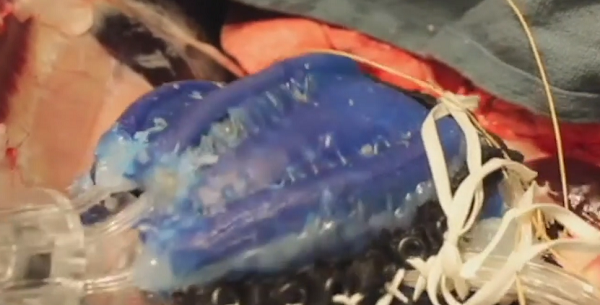Everyone is familiar with software robots . Most of them are made of paper and silicone rubber. They can bend, twist and grab objects that are more than 100 times their weight. However, at present they are only used in the rescue scene, and there is no application in the medical field.
In response, Franck Vernerey, a mechanical engineer at the University of Colorado's Boulder Laboratory, developed a software robot specifically for medical treatment, and he also said that robots used in the medical field can only be constructed in the form of soft body wriggles.

It is reported that in the field of medicine, although the method of drug treatment is a very old way of treating diseases, it is not the best way. Because the treatment is not targeted, whether it is taken or ingested, and there are side effects on other parts of the body.
To this end, scientists hope to send drugs directly to the wound or the source of the disease, but the structure of the human body is not as flat as the road surface, not only tortuous and fragile, so even with the use of micro-robots, it is necessary to consider factors such as the power supply performance and the way of moving the battery. In this regard, Vernerey suggested that robots that resemble “locusts†can solve such problems.
First of all, let's take a look at the movement of locusts, which is mainly the extension and contraction of the body.
In this regard, Vernerey explained: “The movement of the mites, the front and rear sliding is much easier than the movement to the sides, they have tiny spikes, when the squat stretches the body, the surface of the peak will be stained with rotten food; When they contract the body, the tip of the spike snaps into the surface of the road, creating friction and the body moves forward."

Therefore, Vernerey hopes to reproduce the peristaltic movement of the mites with hydrogel. The robot is made of a synthetic material that absorbs or exudes moisture based on temperature and looks like a rubber sponge.
It is understood that the expansion or contraction of the material depends on the temperature. Here, Vernerey further explained: "The hydrogel used in this study shows a dramatic and reversible phase change at a temperature of 32 degrees Celsius. Below 32 degrees Celsius, the hydrogel will be hydrophilic; above this temperature The hydrogel does not absorb water."
But it's hard to install a spike on a hydrogel that resembles a locust. Instead, Vernerey prints a scaly 3D tube inside the robot.
In theory, we can induce this medicinal robot to pass through the body's intestines by temperature, providing medicine for the set up place, but the facts are far from simple.
Once the structure and materials have been determined, Vernerey needs to choose the size of the robot to test which mechanical stress the hydrogel has the best bending and shrinking capacity. In addition, regarding the shape and size of the robot, he also needs to be careful.
Based on the experimental results, the research team found the optimal angle and the optimal size of the robot (much smaller than the thumb).
However, there is still a problem that has not been solved. Although there are scales on the robot, there are no scales inside the human intestine, which means there is no grip. But Vernerey said that magnetic nanomaterials will be used to embed them in hydrogels to achieve the ultimate crawling requirements.
Portable energy storage power Stastion
SHENZHEN CHONDEKUAI TECHNOLOGY CO.LTD , https://www.szfourinone.com